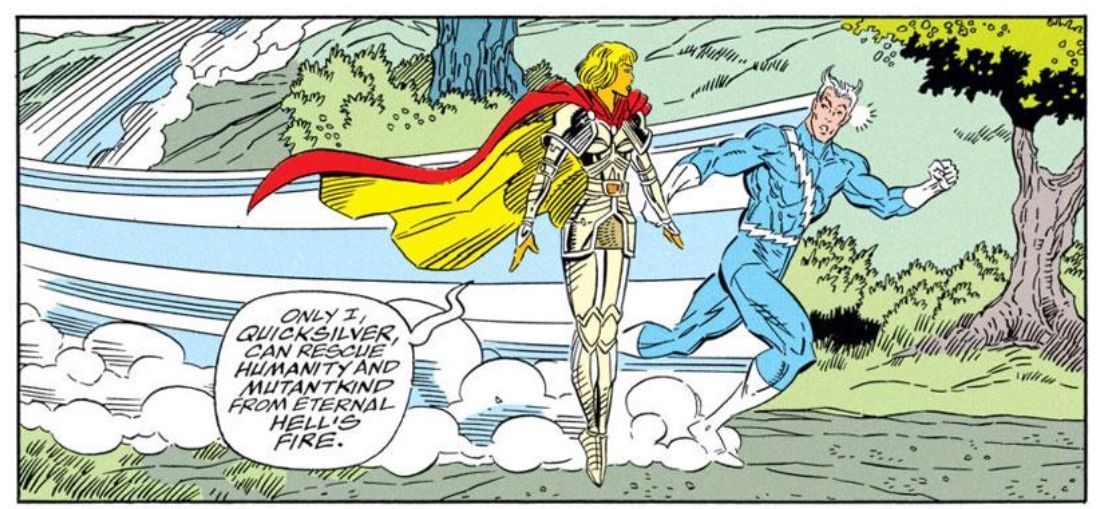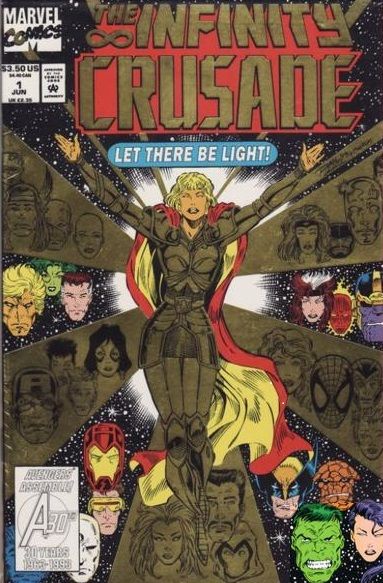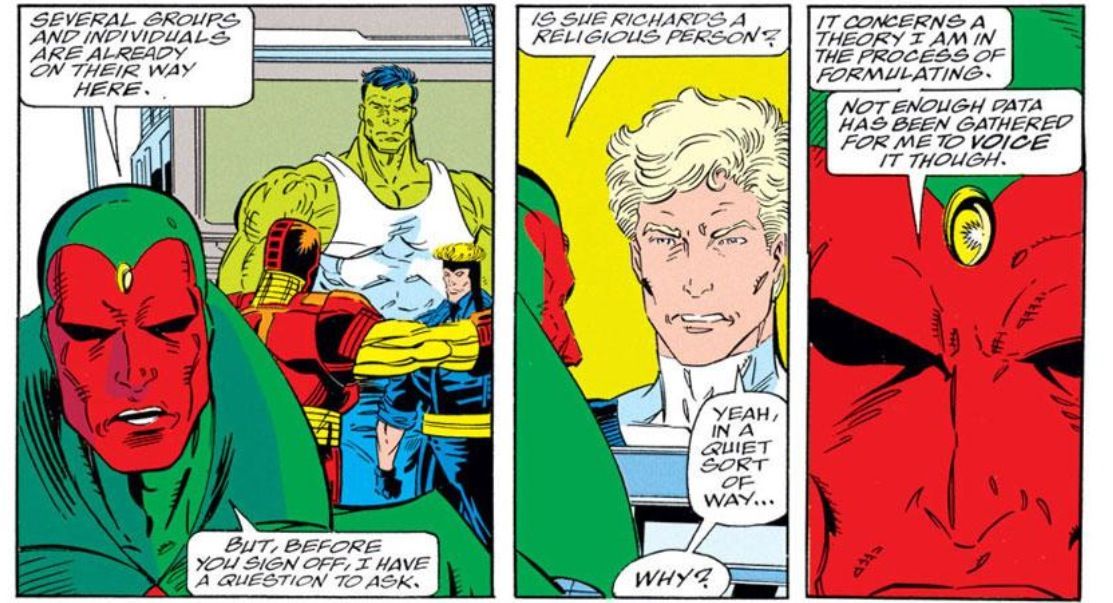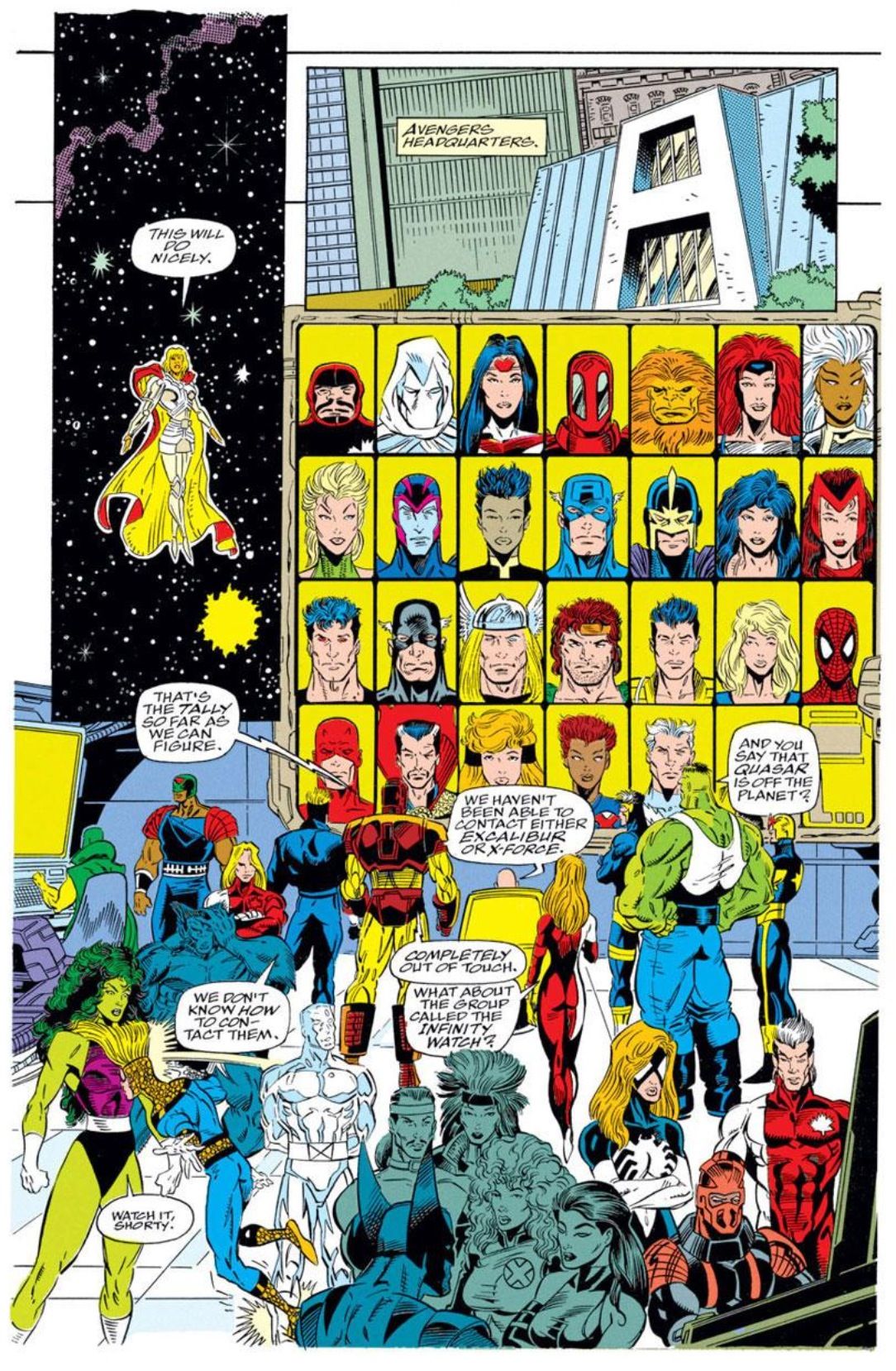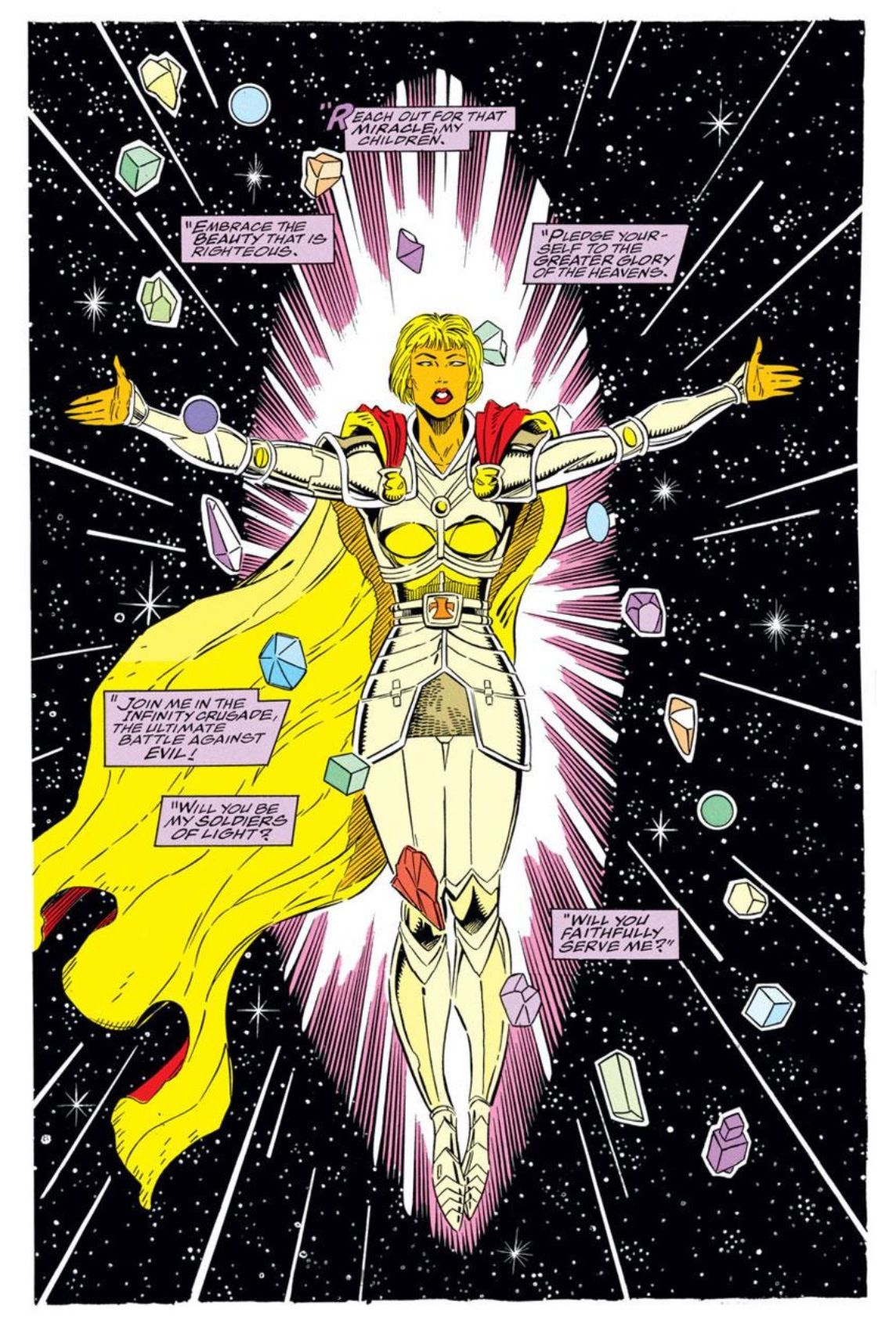In this column, Mark Ginocchio (from Chasing Amazing) takes a look at the gimmick covers from the 1990s and gives his take on whether the comic in question was just a gimmick or whether the comic within the gimmick cover was good. Hence "Gimmick or Good?" Here is an archive of all the comics featured so far. We continue with 1993's foil cover for Infinity Crusade #1...
Infinity Crusade #1 (published June 1993) – script by Jim Starlin, pencils by Ron Lim, inks by Al Milgrom
With the release of Marvel’s newest “Infinity” mini-series, I thought it would be apropos to revisit the third incarnation of the cosmic soap opera with 1993’s “Infinity Crusade.” Writer Jim Starlin had successfully ushered some of his signature Marvel characters in Thanos and Adam Warlock for a new generation of readers with 1991’s “Infinity Gauntlet,” but had started to lose some steam with the concept with the Warlock-centric “Infinity War” mini a year later (which I profiled on “Gimmick or Good?” a few months ago). Crusade would go on to be Starlin’s last “Infinity” series in the 1990s (until “Infinity Abyss” in 2002). In terms of gimmick enhancements, only Crusade’s first issue had one – a “holofoil” effect that resembled beams of light – but for clarification’s sake, in this review I will refer to some larger plot points that are brought up more than just the first issue of this mini-series.
So what about inside the comic?
First, a minor digression. Even as an arrogant, know-it-all teenager, I understood the fastest way to ruin a social outing was to bring up politics or religion. It doesn’t matter how right you think you are, or how intelligently you explain your viewpoints, there’s always going to be somebody in mixed company whose ideology is on the complete opposite end of the spectrum from yours. And once you start arguing with that person, inevitably everybody’s evening is ruined.
That’s what bothers me so much about Infinity Crusade – it’s not even an issue of whether or not I agree with Starlin’s thesis (for the sake of my earlier comment, I’m going to maintain the position that my views on religion are irrelevant). It’s the fact that Starlin is so obnoxiously in your face about his ideology that he’s all but daring people to disagree and get angry with him. Because of this socially awkward and inappropriate approach to storytelling, Crusade #1 and the rest of the series makes for an incredibly off-putting comic book reading experience.
Crusade’s central character is a cosmic entity known as the “Goddess” – who was created from the “good” essence of Warlock (similar to how Infinity War’s Magus was the “evil” side). The Goddess controls a number of containment units similar to cosmic cubes, which together create an “egg” capable of fulfilling her wishes. She uses this power to brainwash half of the Marvel superhero population into joining her fight to eradicate the world of sin and evil. It’s up to the other half of the universe, which includes the likes of Thanos of Mephisto (Marvel’s “devil”) to defeat the Goddess.
As a quick aside, I do wonder how she was able to keep up with Quicksilver here to make her pious pitch.
Putting aside some of the larger flaws concerning Crusade’s execution, what makes Starlin’s concept so dicey is the fact that as one hero after another is getting picked off by the Goddess in the mini’s first issue, including Sue Storm from the Fantastic Four (but not Reed, Johnny or the Thing), the Vision concludes that all of the brainwashed heroes share something in common – they’re “religious.”
Let’s talk about the meaning of “religious” for a second. So among the group of the brainwashed are some understandable choices like Captain America (which I guess only makes sense if you equate patriotism to religious spiritualism), some confusing ones like Spider-Man (do we ever establish “religion” with him?), and some outright absurd ones like Thor and Storm. Thor is based on Norse mythology and Storm was worshipped as a rain goddess prior to joining the X-Men. So what the heck does Vision mean by “religious.” Is he talking about Judeo Christian religious, or something broader? And that’s what makes Starlin such a trouble-maker with Crusade – he’s essentially deriding the general concept of “having faith” in something, anything, as being easily duped by a larger force.
It’s no surprise then that Starlin couches the more science-valuing characters in the Marvel Universe (Reed, Bruce Banner as Hulk, Tony Stark) as the “heroes.” In other words, characters who place “logic” over faith. It’s not even done in a subtle or artistic way. Starlin draws the line in the sand pretty clearly: the eggheads are the good guys and the “religious” folk are following the orders of a sociopath that is looking to destroy half of the planet for being “sinners.”
So if you haven’t been completely alienated by Starlin’s thesis yet, let’s bring up a few more issues I have with the comic and the whole series. Similar to Infinity Gauntlet and War, in Crusade, Starlin crafts a plot device where he essentially wipes out half the Marvel universe in a single stroke despite the fact that the mini is advertised as a mega-crossover starring everyone. If you’re reading this comic looking for a cool moment involving Thor or Storm, you’re out of luck because they’ve been reduced to mindless zombies with no personality. Just like how Thanos killed half the world in Gauntlet and the evil doppelgangers in Crusade took some heroes away from the action. This device made sense in Gauntlet since it played into Thanos courting death. It made considerably less sense in War and just smacks of flat-out laziness in Crusade. For all of its criticisms, Marvel’s Secret Wars made a concerted effort to give each of the characters “moments.” Starlin couldn’t be bothered.
Like War, Crusade also struggles with the fact that Starlin can’t help but give characters he has some semblance of ownership of – whether it’s from his 1970s work at Marvel, or his Warlock and the Infinity Watch series in the 1990s – all of the accolades, while the rest of the superhero universe comes across as a bunch of simpletons or background players. Who needs a fun sequence with Captain America or Daredevil when Moondragon and Warlock are available? I will say that I could always use some more Pip the Troll.
Again, similar to War, Lim’s artwork on Crusade ranges between pretty good to rushing to make a deadline. The cosmic imagery showing the Goddess among the stars or in her wish fulfillment egg are consistently good, but the larger battle sequences are occasionally problematic.
So unless you want to hear a then-40-year-old rail against the evils of organized religion through the voices of comic book characters, I would steer clear of this one. While I called War a “gimmick,” that series at least had its share of fun moments. Crusade may be the worst of the bunch. No wonder why it took nearly 10 years to resurrect the idea. Now let’s see how Jonathan Hickaman does.
Verdict: Gimmick

